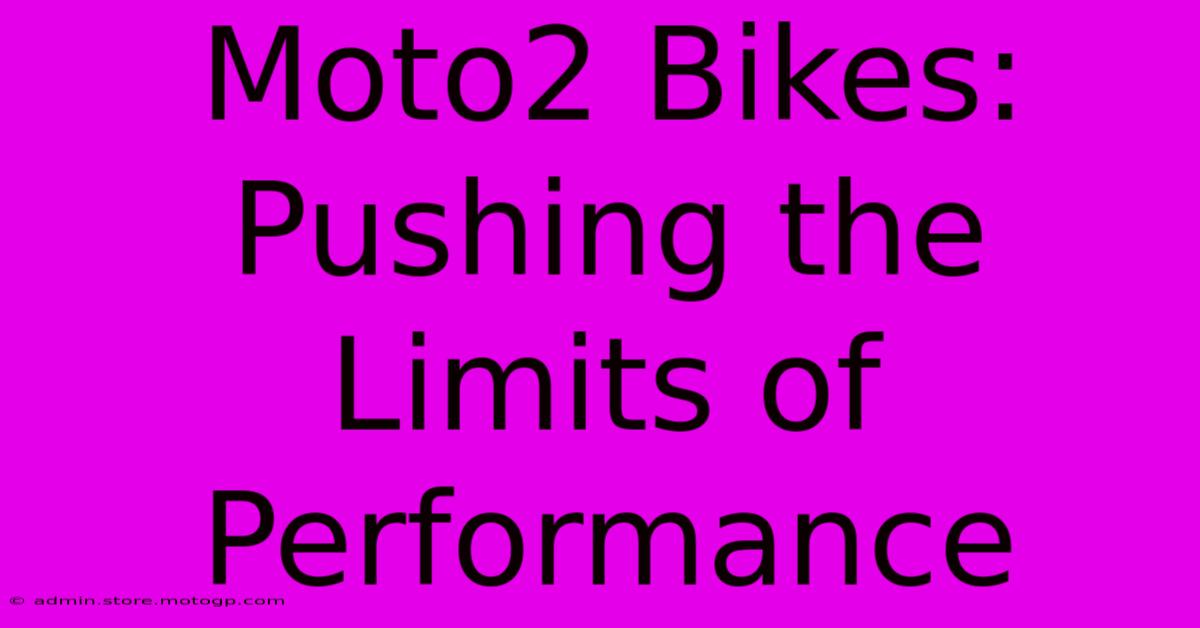Moto2 Bikes: Pushing The Limits Of Performance

Table of Contents
Moto2 Bikes: Pushing the Limits of Performance
Moto2. The name itself conjures images of breathtaking speed, intense competition, and cutting-edge technology. This intermediate class of Grand Prix motorcycle racing serves as a crucial proving ground for future MotoGP stars, and the bikes themselves represent a fascinating blend of performance and regulation. This article delves into the heart of Moto2, exploring the machines that push the limits of performance within a carefully defined framework.
The Unified Engine: A Level Playing Field
Unlike MotoGP, where manufacturers battle for supremacy with their own bespoke engines, Moto2 boasts a unified engine specification. This means all teams utilize the same 765cc Triumph triple-cylinder engine, creating a truly level playing field where rider skill and team strategy are paramount. This standardization fosters closer competition and allows for incredibly tight racing. While the engine is standard, teams are still able to make significant adjustments through meticulous tuning and sophisticated engine management systems, pushing the performance envelope within the confines of the regulations.
Tuning the Triumph Triple: Fine-tuning for an Edge
Although the engine is standard, teams have several avenues for optimization. Engine mapping, exhaust systems, and airbox design offer subtle yet significant opportunities to gain an edge. The slightest modification can translate into noticeable improvements in horsepower, torque, and overall rideability. This focus on meticulous tuning highlights the importance of technical expertise within Moto2 teams.
Chassis Dynamics: A Dance of Precision
Beyond the engine, the chassis plays a crucial role in Moto2 performance. Teams are free to design their own chassis, swingarms, and suspension systems. This allows for considerable variation in handling characteristics, with each team aiming for optimal performance based on their rider's preferences and the specific demands of each circuit. The interplay between chassis geometry, suspension setup, and tire selection is a constant area of experimentation and refinement.
Suspension and Geometry: The Pursuit of Perfection
The search for the perfect setup is ongoing. Teams meticulously adjust suspension components (forks, shocks, linkages) to fine-tune the bike's handling, ensuring optimal grip and stability under braking, acceleration, and cornering. Even minor adjustments to chassis geometry – such as rake and trail – can have a profound impact on a bike's overall behavior. This continuous pursuit of perfection is a hallmark of Moto2.
Aerodynamics: Slicing Through the Air
Aerodynamics also play a vital role. Teams invest significant resources in developing fairings and other aerodynamic components designed to minimize drag and maximize downforce. While regulations limit the extent of these modifications, even subtle improvements can significantly enhance top speed and cornering stability, especially at high-speed circuits.
The Importance of Airflow: Minimizing Drag, Maximizing Downforce
The goal is to optimize airflow around the bike, reducing drag to improve top speed and generating downforce to enhance stability at high speeds and through corners. Sophisticated computational fluid dynamics (CFD) and wind tunnel testing are frequently employed to achieve this.
The Human Element: Rider Skill and Team Strategy
While the technology is impressive, the human element remains crucial. Rider skill, team strategy, and tire management significantly influence race results. The best riders seamlessly integrate their skills with the bike's capabilities, extracting maximum performance from the sophisticated machine.
The Synergy of Man and Machine: A Winning Combination
Ultimately, success in Moto2 requires a perfect synergy between rider talent, machine performance, and strategic decision-making by the team. The close competition ensures that only the most skilled and well-prepared teams can triumph.
Conclusion: A Hotbed of Innovation and Talent
Moto2 bikes represent a remarkable intersection of standardized components and cutting-edge engineering. The unified engine provides a level playing field, while the freedom to design the chassis, suspension, and aerodynamic components allows teams to showcase their innovation and expertise. The resulting close competition, along with the focus on rider development, solidifies Moto2's position as a vital stepping stone to MotoGP and a hotbed of talent and technological advancement.

Thank you for visiting our website wich cover about Moto2 Bikes: Pushing The Limits Of Performance. We hope the information provided has been useful to you. Feel free to contact us if you have any questions or need further assistance. See you next time and dont miss to bookmark.
Featured Posts
-
Beyond Fast Moto Gp Horsepower Explained
Feb 18, 2025
-
Moto2 A Spectacle Of Speed And Skill
Feb 18, 2025
-
F1 Austin Parking The Insiders Scoop
Feb 18, 2025
-
Lub Si Cota Unleash Your Hidden Power
Feb 18, 2025
-
Cota Concerts Find Your Groove
Feb 18, 2025
